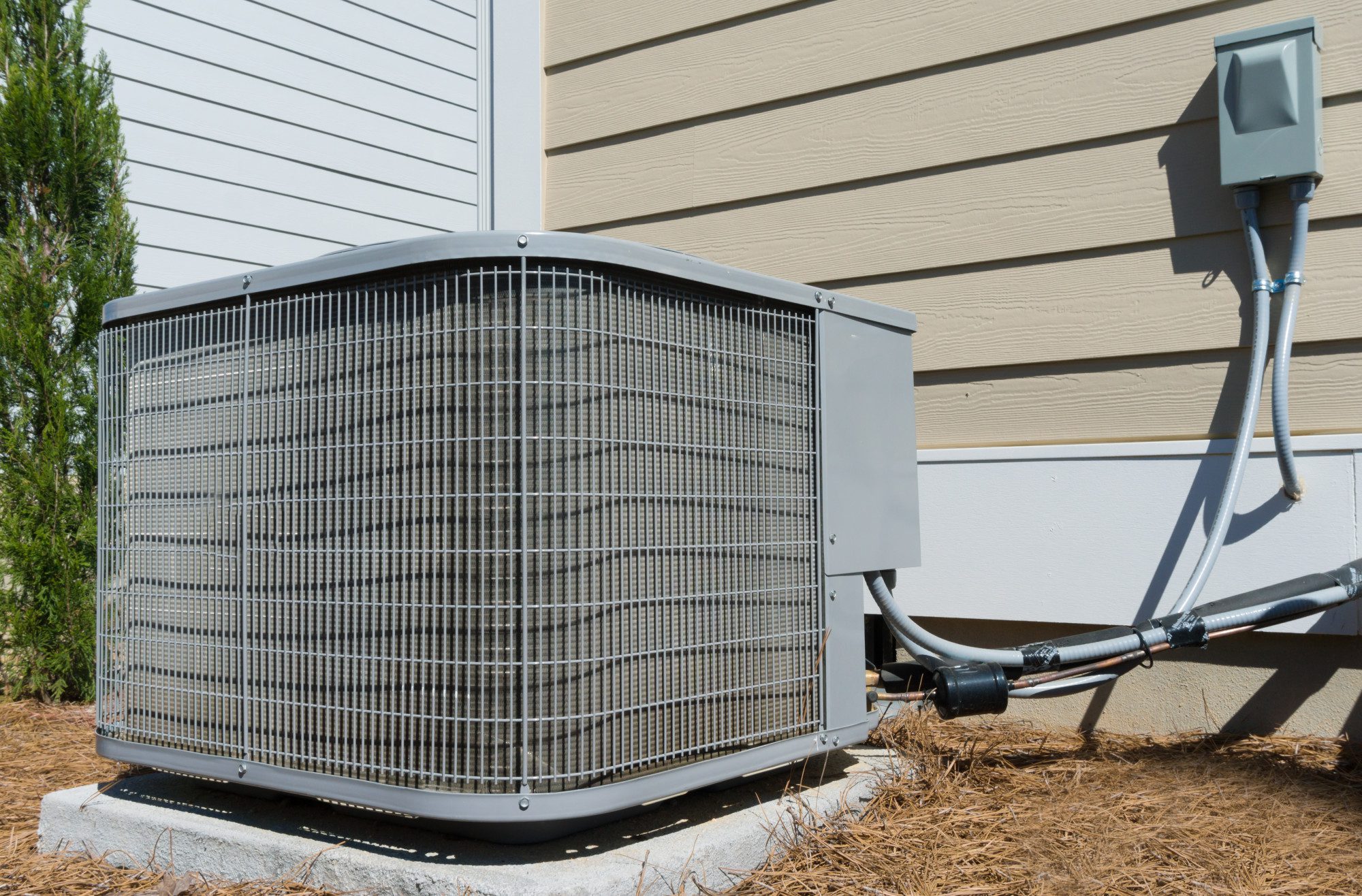
Top 7 AC Unit Troubleshooting Tips to Keep Your Unit Running Efficiently
A properly functioning air conditioning (AC) unit is essential, especially during the scorching summer months. Not only does it keep your home comfortable, but it also helps maintain indoor air quality by filtering out dust and allergens. However, like any other appliance, your AC unit can run into problems that affect its efficiency and performance. While some issues can be resolved with basic troubleshooting, others may require professional intervention. In this guide, we’ll explore the top 7 AC unit troubleshooting tips to help you identify and resolve common issues before they turn into costly repairs. We’ll also highlight the importance of regular maintenance by a professional HVAC contractor to keep your AC unit running efficiently and extend its lifespan.
1. Check the Thermostat Settings
One of the most common reasons an AC unit isn’t cooling properly is incorrect thermostat settings. This issue can easily be overlooked, but it’s a simple and quick fix that can save you a lot of hassle.
Troubleshooting Steps
- Ensure the Thermostat Is Set to “Cool”: Check that the thermostat is set to “Cool” mode. It might sound basic, but it’s not uncommon for the setting to be accidentally changed to “Heat” or “Fan” mode, especially when switching between seasons.
- Set the Temperature Correctly: Make sure the thermostat is set to a temperature lower than the current room temperature. If the thermostat is set to a higher temperature, the unit won’t kick on.
- Check the Batteries: If your thermostat runs on batteries, weak or dead batteries could cause it to malfunction. Replace the batteries if necessary to ensure proper operation.
- Inspect the Thermostat Location: If the thermostat is located near a heat source (like a window or an oven), it may give false readings, causing the AC unit to run inefficiently. Consider relocating the thermostat if it’s placed in an area that might distort its temperature readings.
When to Call a Professional
If the thermostat appears to be working correctly, but the AC unit still doesn’t turn on or cool effectively, it could indicate an electrical issue or a problem with the thermostat wiring. In this case, contacting a professional HVAC technician is recommended to inspect and resolve the problem.

2. Check the Air Filter
The air filter in your AC unit plays a critical role in maintaining indoor air quality and allowing proper airflow. A dirty or clogged filter can significantly reduce your unit’s efficiency, causing it to work harder and potentially leading to breakdowns.
Troubleshooting Steps
- Inspect the Filter: Locate the air filter, which is typically found near the return air duct or inside the unit itself. Check for dirt, dust, and debris buildup. If the filter looks clogged or discolored, it’s time to clean or replace it.
- Clean or Replace the Filter: If you have a reusable filter, rinse it thoroughly with water and let it dry completely before reinstalling. If it’s a disposable filter, replace it with a new one of the correct size.
- Set a Replacement Schedule: To keep your AC unit running efficiently, replace or clean the air filter every 1-3 months, depending on factors like usage, pets, and indoor air quality.
When to Call a Professional
If replacing the air filter doesn’t improve airflow or cooling, it could indicate a more complex problem, such as a blocked air duct, an issue with the blower motor, or frozen evaporator coils. An HVAC professional can diagnose the root cause and perform the necessary repairs.
3. Inspect the Circuit Breaker and Power Supply
Sometimes, the problem with your AC unit might be as simple as a tripped circuit breaker or a disconnected power supply. Checking the power sources can quickly rule out electrical issues that could prevent your unit from operating.
Troubleshooting Steps
- Check the Circuit Breaker: Locate the electrical panel and check if the breaker for the AC unit has tripped. If so, reset it by switching it off and then back on. If the breaker trips again after resetting, there might be an electrical fault that requires professional attention.
- Inspect the Power Cord: Ensure that the AC unit’s power cord is securely plugged into the outlet. Loose or damaged cords can interrupt the power supply, affecting the unit’s performance.
- Examine the Safety Switch: Some HVAC systems have a safety switch near the indoor unit that shuts off the system if the drain pan overflows. Check that this switch hasn’t been triggered, as it will prevent the AC from turning on.
When to Call a Professional
Frequent tripping of the circuit breaker can indicate electrical problems, such as wiring issues, a short circuit, or an overloaded system. These issues can pose safety risks and should be addressed by a licensed HVAC technician to ensure proper and safe operation of your AC unit.

4. Clean the Condenser Coils
The condenser coils in your outdoor unit are responsible for releasing the heat extracted from your home. Over time, dirt, debris, and grime can accumulate on the coils, reducing their efficiency and causing the unit to overheat.
Troubleshooting Steps
- Turn Off the Power: Before cleaning the condenser coils, turn off the power to the AC unit to ensure safety.
- Remove Debris: Use a soft brush or vacuum cleaner with a brush attachment to remove loose dirt, leaves, and debris from the coils. Avoid using sharp objects that could damage the fins.
- Wash the Coils: For deeper cleaning, use a garden hose to gently spray water on the coils. Avoid using high-pressure water, as it can bend the fins and reduce airflow. For stubborn grime, consider using a coil cleaner spray specifically designed for AC units.
When to Call a Professional
If you notice significant dirt buildup, damage to the coils, or corrosion, it’s best to call a professional HVAC technician for a thorough cleaning and inspection. Regular maintenance by a professional can prevent damage and ensure that the coils continue to function efficiently.
5. Check for Refrigerant Leaks
Refrigerant is essential for the cooling process in an AC unit. A refrigerant leak can significantly impair the unit’s ability to cool your home, leading to higher energy bills and potential system damage.
Troubleshooting Steps
- Listen for Hissing Noises: A hissing or bubbling sound near the AC unit could indicate a refrigerant leak. The noise is caused by the escape of refrigerant gas from a leak in the coils or refrigerant lines.
- Inspect for Ice Buildup: If you see ice forming on the evaporator coils or refrigerant lines, it could be a sign of low refrigerant levels, often caused by a leak.
- Monitor Cooling Performance: If your AC unit is running but not cooling effectively, or if it takes longer than usual to reach the desired temperature, low refrigerant could be the culprit.
When to Call a Professional
Refrigerant issues are not DIY-friendly. Handling refrigerant requires special equipment and certification due to its environmental and health hazards. If you suspect a leak, contact a licensed HVAC technician to locate and repair the leak and recharge the refrigerant to the appropriate level.

6. Clear the Area Around the Outdoor Unit
The outdoor unit (condenser) needs sufficient airflow to function efficiently. Obstructions around the unit, such as plants, debris, or fencing, can impede airflow, causing the AC to overheat and reduce its cooling capacity.
Troubleshooting Steps
- Clear Debris: Remove leaves, grass clippings, branches, and any other debris around the unit. Ensure there is at least 2-3 feet of clearance on all sides of the condenser for optimal airflow.
- Trim Vegetation: Regularly trim any nearby bushes, trees, or grass to prevent overgrowth from blocking the unit. Proper airflow is crucial for the condenser to release heat and maintain efficient cooling.
When to Call a Professional
If you notice physical damage to the condenser, such as bent fins, broken fan blades, or unusual noises, it’s time to call an HVAC professional. They can inspect and repair the unit, ensuring it operates efficiently and safely.
7. Schedule Regular Professional Maintenance
Routine maintenance by a professional HVAC company is key to keeping your AC unit running efficiently and preventing costly breakdowns. While some troubleshooting steps can be performed by homeowners, a licensed technician can provide a thorough inspection and servicing that addresses hidden issues and optimizes system performance.
Benefits of Professional Maintenance
- Comprehensive Inspection: A professional will inspect all components of your AC unit, including the evaporator and condenser coils, refrigerant levels, thermostat calibration, electrical connections, and ductwork. This helps identify potential problems before they escalate.
- Cleaning and Adjustments: During a maintenance visit, the technician will clean the coils, adjust fan settings, tighten electrical connections, lubricate moving parts, and replace filters if necessary.
- Extend Equipment Lifespan: Regular maintenance improves the efficiency of your AC unit, reduces wear and tear, and extends its operational life. Investing in annual maintenance can save you money in the long run by avoiding major repairs or early replacement.
When to Schedule Maintenance
It’s recommended to schedule professional maintenance at least once a year, ideally in the spring before the summer cooling season. If you live in an area with extreme temperatures or use your AC extensively, consider a bi-annual maintenance plan to ensure optimal performance.
Maintaining an efficiently running AC unit requires a combination of regular checks, basic troubleshooting, and professional servicing. By following these seven troubleshooting tips, you can address common issues, improve your unit’s performance, and reduce the risk of breakdowns. However, some problems require the expertise of a professional HVAC technician to ensure safety and proper repairs.


Leave a Reply